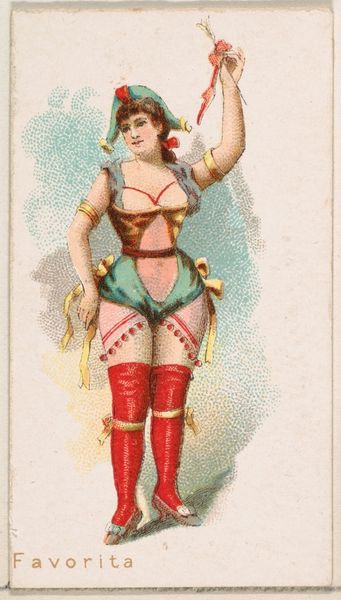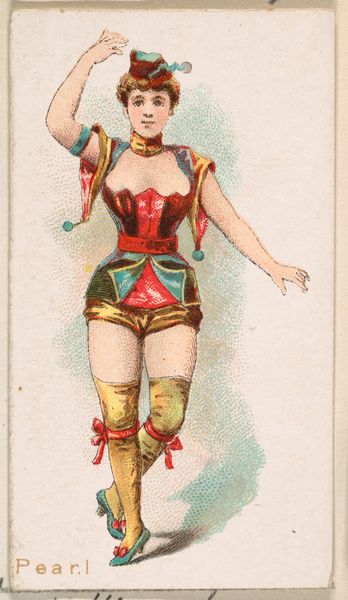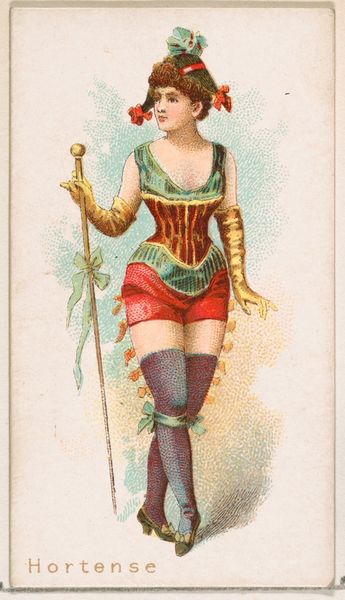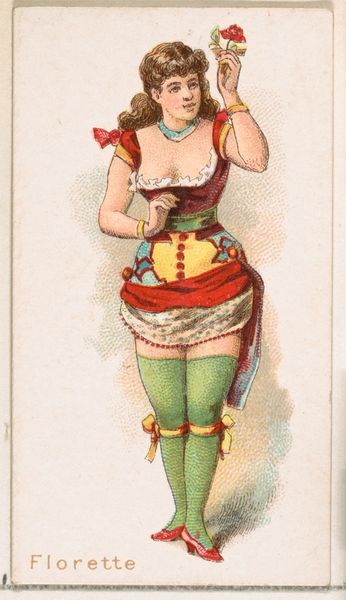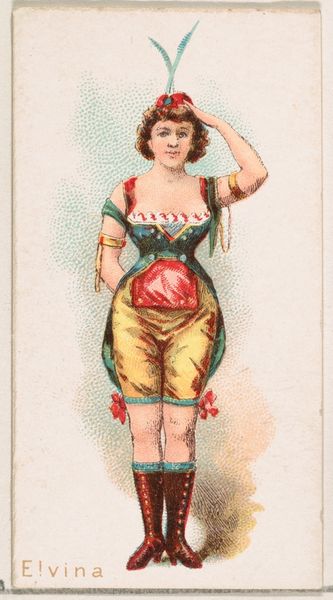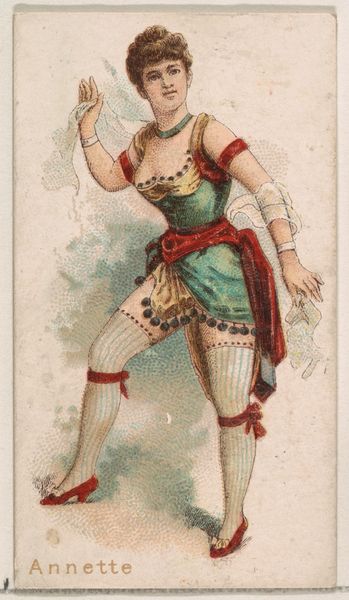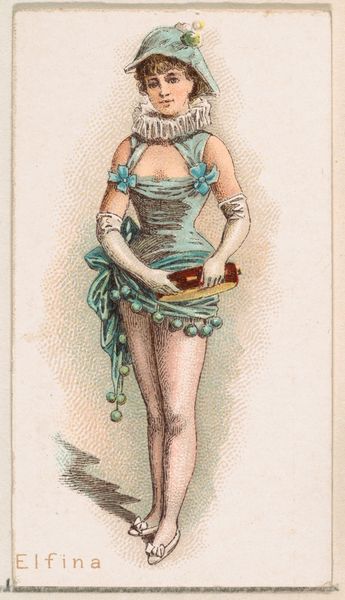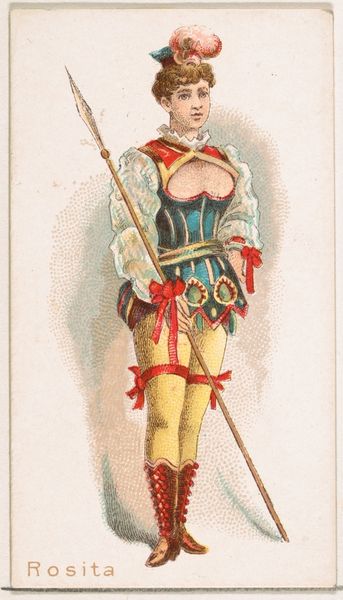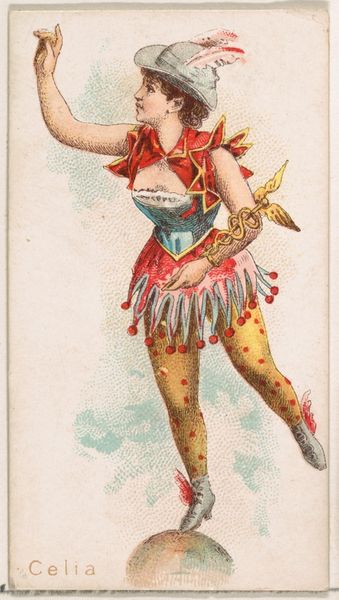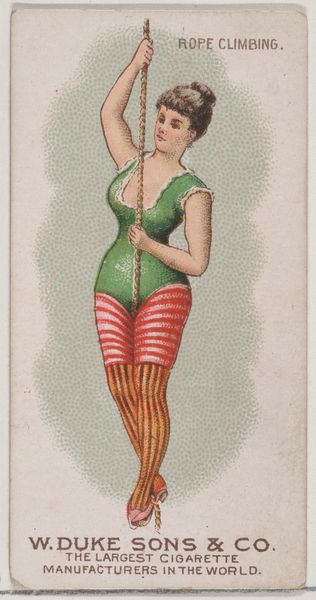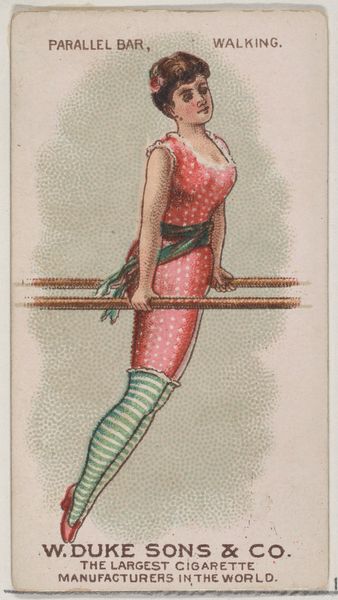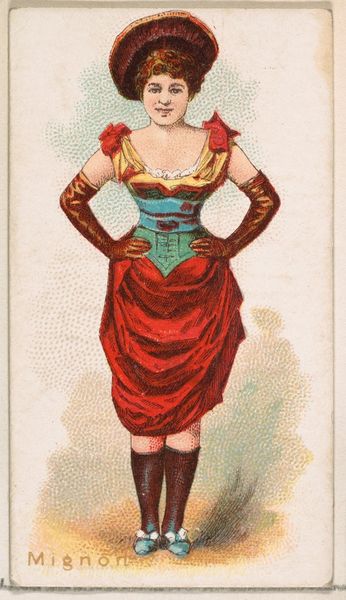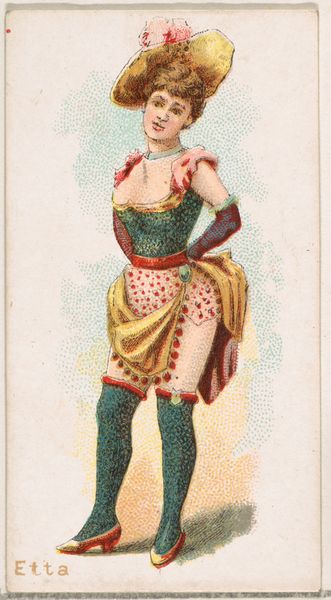
Laurette, from the Ballet Queens series (N182) issued by Wm. S. Kimball & Co. 1889
0:00
0:00
drawing, coloured-pencil, print
#
portrait
#
drawing
#
coloured-pencil
# print
#
impressionism
#
figuration
#
coloured pencil
#
watercolour illustration
#
watercolor
Dimensions: Sheet: 2 3/4 × 1 1/2 in. (7 × 3.8 cm)
Copyright: Public Domain
Curator: Welcome. Before us, we have "Laurette," a print issued in 1889 by Wm. S. Kimball & Co. as part of their Ballet Queens series. It’s rendered using colored pencils, and it currently resides here at the Metropolitan Museum of Art. Editor: My initial impression? It’s… undeniably theatrical. A vibrant yet somewhat peculiar portrait. She has a touch of a harlequin about her, wouldn't you say? The colours are bright and almost aggressively cheerful. Curator: Indeed. These were trade cards, intended as advertisements tucked into cigarette packs. Think of them as precursors to modern trading cards. The Ballet Queens series, in particular, offered glimpses into the popular entertainment of the time, but also demonstrates the rising use of female imagery to push commerce, even culture, to the public. Editor: Absolutely. The figure itself evokes a duality – a captivating performer and a symbolic jester, perhaps highlighting the tightrope these women walked between artistic expression and public consumption. Red hints recur on the headwear and body in a conscious and somewhat provocative manner. Curator: Precisely! Ballet dancers were celebrities, objects of admiration, but their images also became tools for capitalist ambition. It is a very modern concept applied through an emerging popular medium, making it spread fast through all levels of society. The print medium enabled its wider circulation and appeal to the average consumer. Editor: Look at the jester’s accoutrements--the bells, the peaked hat--they serve not only as a stage costume but also as a signifier. A reminder, perhaps, that behind the spectacle lies a playful, even subversive element. Think back to court jesters through history; these characters were charged with exposing truth and critique! Is it that surprising it applies to the world of ballet? Curator: The placement of "Laurette" within the "Ballet Queens" collection is telling. Ballet in the late 19th century was becoming more democratized. By making the art more popular, the symbol attached is equally watered down in terms of political leverage and cultural meaning. Editor: So, what begins as a symbolic marker gradually shifts into something… flatter, more decorative. A symbol diluted through popular culture? Curator: Exactly. It is a powerful, very real shift in both art history and culture. Editor: So, from spectacle to symbol and then commodity. A remarkable distillation within one image! Thank you.
Comments
No comments
Be the first to comment and join the conversation on the ultimate creative platform.
